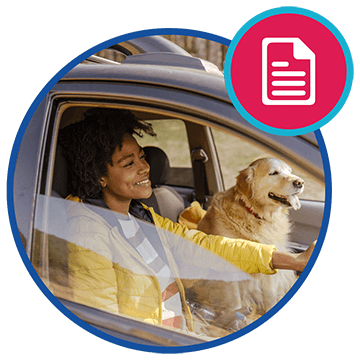When you purchase a new vehicle, you may want to trade in the pre-existing car you own. If what you owe on the car is lower than the car’s value, the difference can be geared towards a new vehicle purchase. You can get the most from your trade-in if you make comparisons of offers from different car dealers and negotiate the value.
We often hear one misconception when customers come to trade their vehicle – trading in their vehicle means their loan will vanish. Unfortunately, the remaining balance of a car loan must be paid off, even if you trade it in. Sometimes that can be done with the value you receive from the vehicle traded in, sometimes you can roll it into your new loan. But a loan isn’t just attached to a car and goes away when you get rid of it. This is important to know.
Trading in your old vehicle, however, is a great option to gain value and upgrade to the latest tech and features required for you and your family. With that in mind, here are some tips that can help you know what to expect from the process.
Trading a Car – The Process Involved
Your old car can be taken to any car dealer to see if they are willing and interested in buying, and if they are, you sell it. The process really can be that simple. But spending some time to do your behind-the-scenes work can pay off in ways you don’t expect. Here are things to consider doing before engaging in a trade-in:
Research the Worth of The Car You Want to Trade-in
With online platforms like Edmunds and The Canadian Black Book, you input details about your car, such as mileage, model, and condition. This info helps the site to give you an average estimate of the market value of your vehicle.
Knowledge of your car’s value helps you get an insight into what the dealer may propose for your car and bargain a fair trade-in price.
Check if You Still Owe on Your Current Car
Your car loan may be upside down or have negative equity. But these may not hinder you from trading in your old car. Instead, it may make your old car loan roll over to the new car you just bought. This may sound simple but its effects may be adverse; digging you further into debt and possibly increasing your monthly payments.
Receive an Estimate from Several Dealers
The best prices are only known when there are multiple proposals from various dealers. The dealer whom you intend to patronize may send you an estimate, but you can get estimates from other dealers dealing in the make and model of your preferred vehicle.
Remember, always read through the offers of these dealers. Some may offer you some level of assurance and value for your trade-in even if the car is in a poor state. Some dealers may propose to clear your car loan. Always do your homework and ask relevant questions if a proposal seems too good to be true.
Bargain Your Way Through
There’s no rule that says you must accept the first trade-in proposal made by a car dealer. You can counter-bargain their estimate with a higher one. Most dealers start their offer on a low-level basis.
In situations where you intend to buy your new car from the same place you bought your old car, ensure they don’t hype the price of the new car to make up for the amount they’re paying you for the old car.
Once there’s an agreement on the price by both parties, then it’s time to end the transaction. Make sure everything you agree on is clearly written in your contract document.
What are the Advantages and Backdrops of Trading in Your Car?
There are drawbacks and benefits of trade-ins. This is dependent on your financial situation.
Advantages
You don’t have to be responsible for finding a private buyer, inspections, or scheduling test drives. You may find yourself in scary circumstances, in terms of stolen vehicles or worse when you try and deal with private sales yourself. People living in provinces where taxes are paid on new vehicle purchases may only pay tax on the difference between the value of the new car and the trade-in value.
Disadvantage
You may get more money if you sell your car to private shoppers. Car dealers may not be willing to pay sticker price for your vehicle because they are looking to make gains from selling it, so rather they may offer you wholesale value (the price dealers get cars from car manufacturers) or less.
The Best Time to Trade-in Your Vehicle
We encourage shoppers to drive cars that match their lifestyle. This way, they find freedom – financially and otherwise. Aside from your car loan payment, you’re paying extra money you did not budget for. This is standard practice and should be expected when your car is a gas burner, requires extra maintenance, or special car parts. If these are making things hard for you, you may consider trading in the vehicle for one with fewer whistles and bells. Usually, towards the end of every year, from October through to December, car dealerships look towards making space for new car models coming out the following year. An awesome deal can be closed within this period.



